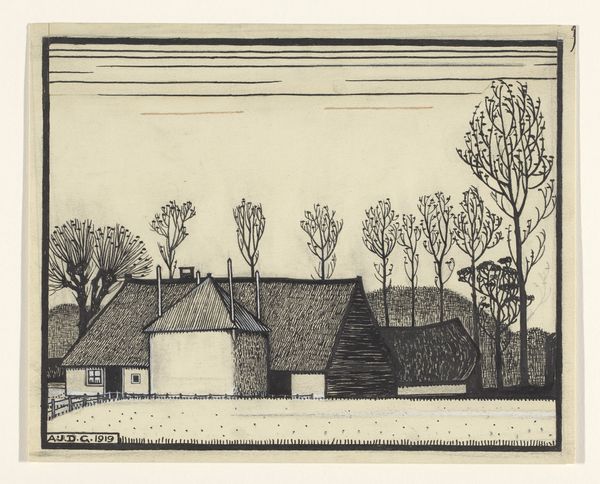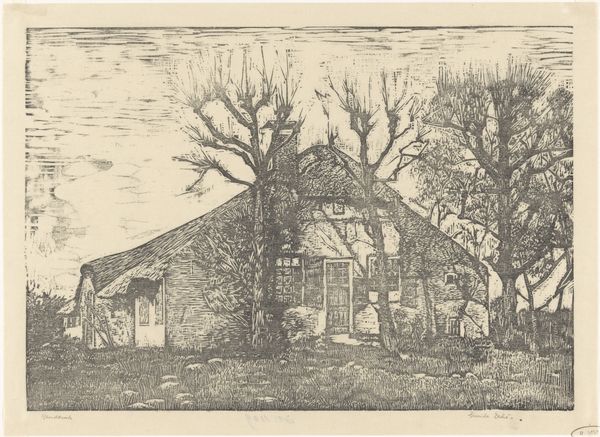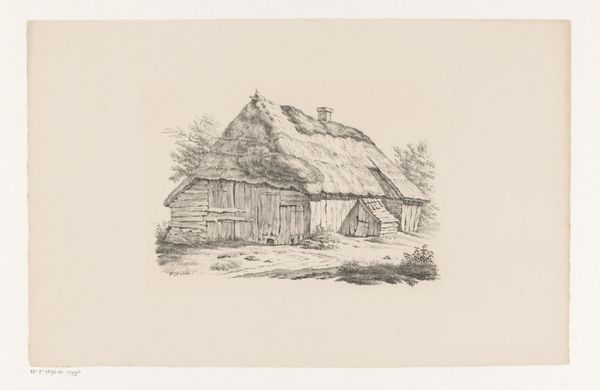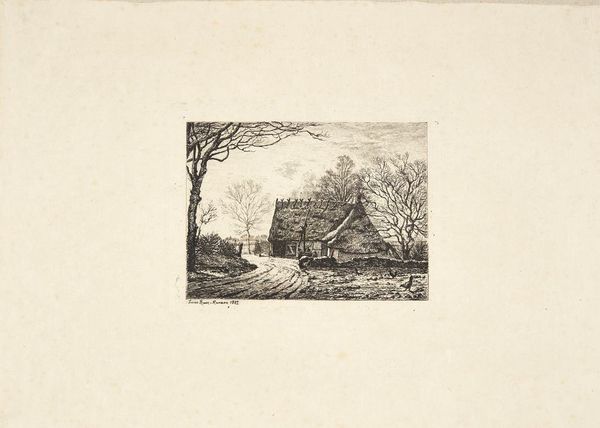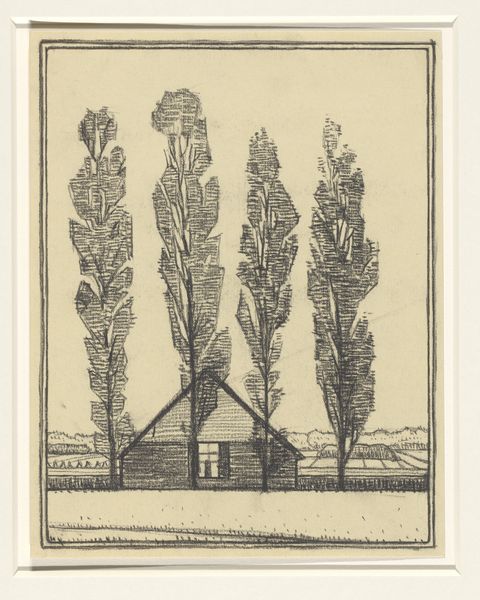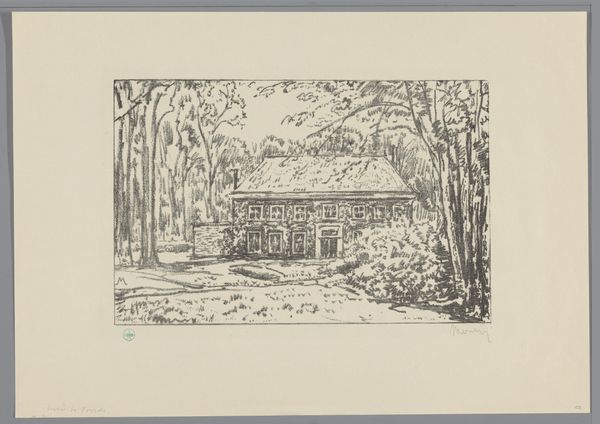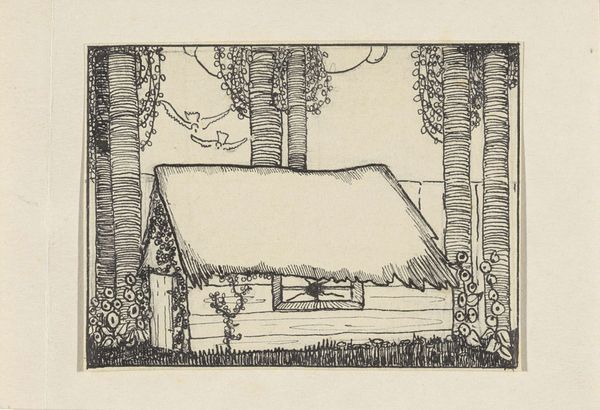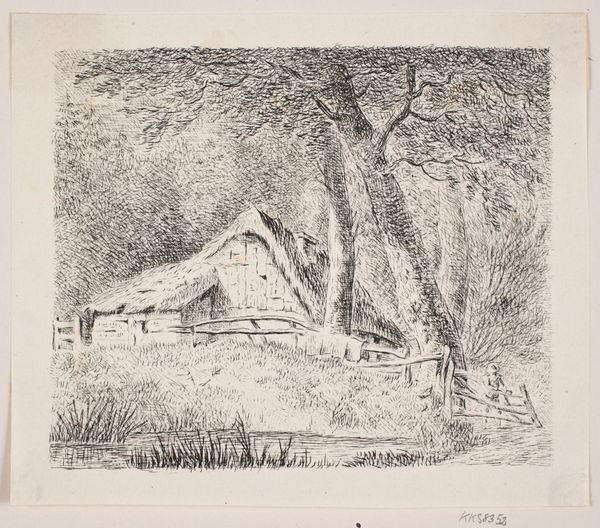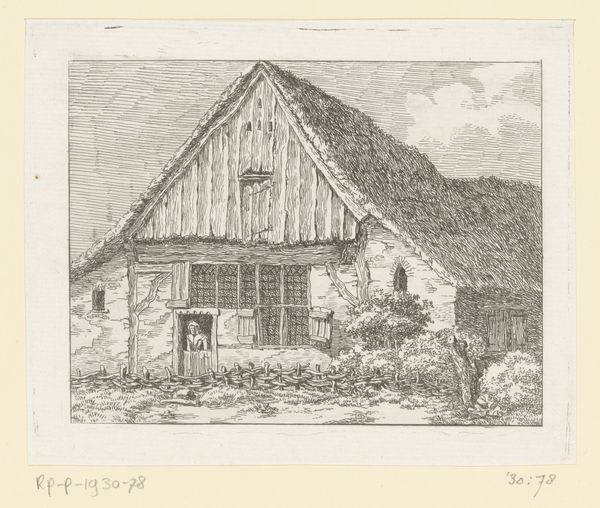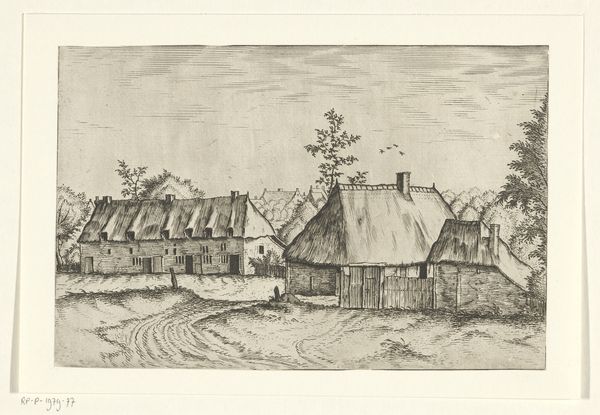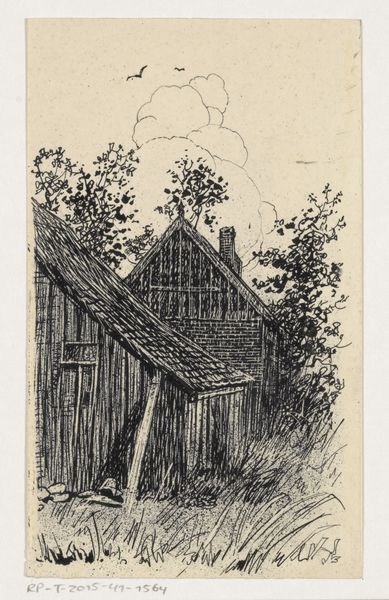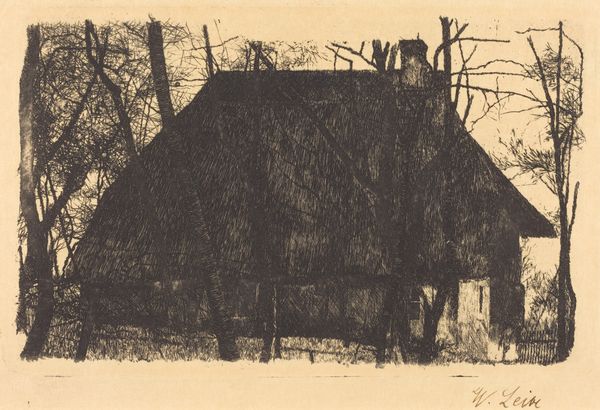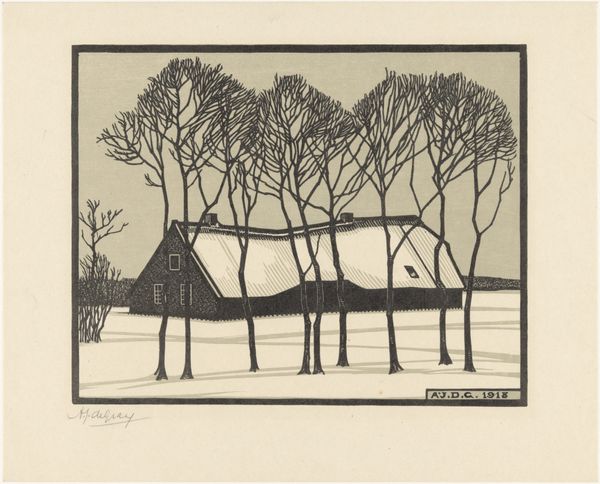
drawing, print, etching, paper, woodblock-print
#
drawing
#
art-nouveau
# print
#
etching
#
landscape
#
etching
#
paper
#
woodblock-print
#
geometric
#
genre-painting
Dimensions: height 240 mm, width 320 mm
Copyright: Rijks Museum: Open Domain
Editor: So, this is Julie de Graag’s "A Thatched Farm" from 1919. It’s a woodblock print, and it feels so…stark. I'm really struck by the rigid geometric shapes in this otherwise idyllic landscape. What do you see in this piece? Curator: I see a deliberate negotiation between industrialization and the pastoral idyll. De Graag uses the woodblock medium, a traditionally 'lower' craft form, to depict a romanticized image of rural life, seemingly critiquing the consumption of such idealized landscapes by an increasingly urban population. Consider the labor involved: the artist's hand carving the block, the physical act of printing. Doesn't the flatness, almost a diagrammatic rendering, almost reject the illusionism of painting in favour of a more direct connection to its making? Editor: That’s fascinating! I hadn't thought about the medium itself as being part of the message. It almost makes the image feel manufactured, even though it's supposed to be a 'natural' scene. Curator: Exactly. Think about where this print might have been displayed – in a home, perhaps, of someone seeking escape from the city. This print becomes a commodity, a representation of a lifestyle increasingly out of reach for many due to industrial capitalism. The geometric frame itself acts as a barrier. Editor: So, the print becomes an object, a manufactured longing? But isn't she also embracing new ways to bring art to more people? It’s a print after all. Curator: Indeed, by embracing a reproductive medium, the artist can democratize access to art, though perhaps at the expense of originality. Editor: That's really made me rethink how I see this print. I was initially drawn to the simplicity of it, but now I see a more complex commentary about industry and our relationship with nature. Curator: I hope this dialogue sheds new light on the intersectionality of artistic processes and wider socio-economic themes for our visitors.
Comments
No comments
Be the first to comment and join the conversation on the ultimate creative platform.
